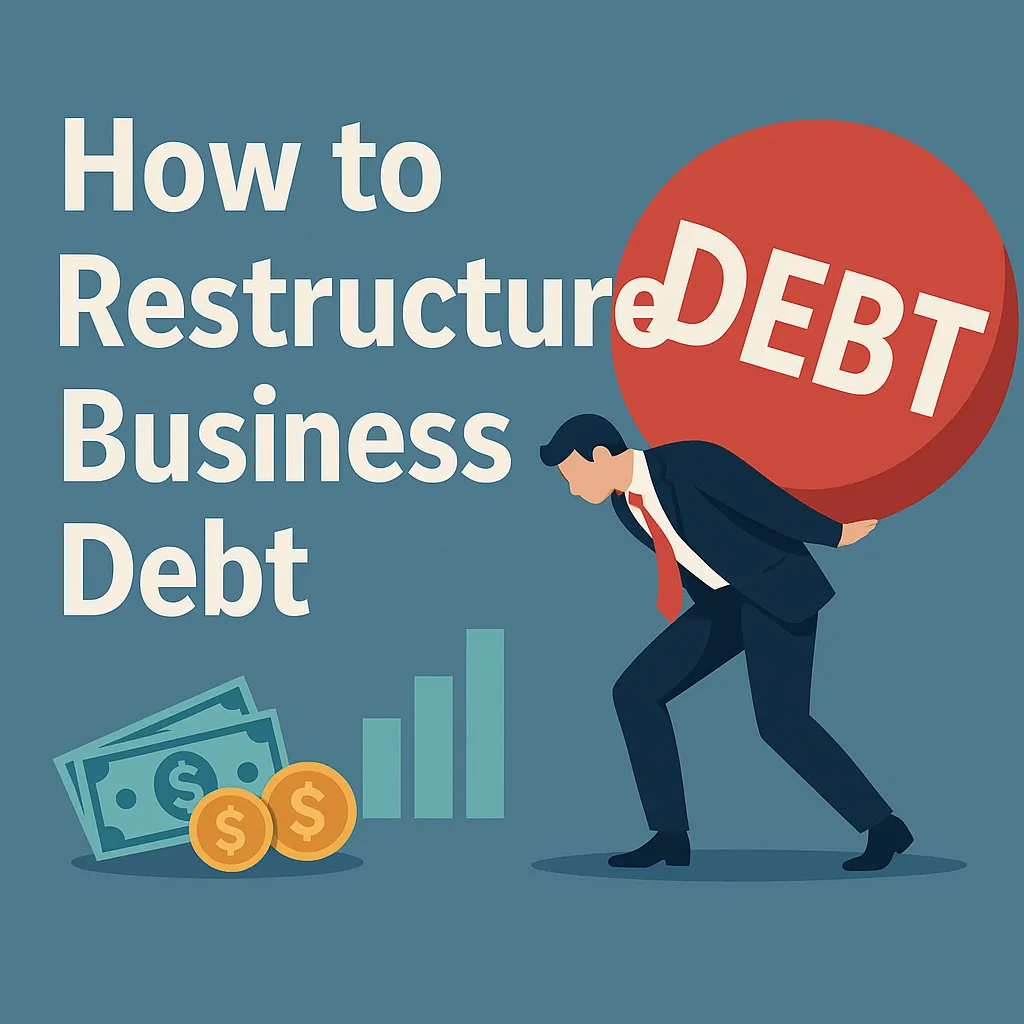
How to Restructure Business Debt: A Strategic Guide for Business Owners
When a business is struggling to manage its financial obligations, debt can feel like an anchor pulling the company under. But with the right strategy, restructuring business debt can be a powerful tool to regain control, improve cash flow, and position the company for long-term success.
Whether you’re facing reduced revenue, mounting expenses, or economic disruption, here’s how to take actionable steps to restructure business debt and stabilize operations.
1. Understand Your Financial Position
The first step in any debt restructuring plan is a full assessment of your financial situation.
Inventory all debts: Create a list of creditors, outstanding balances, interest rates, monthly payments, and payment terms.
Review cash flow: Analyze your revenue streams, expenses, and working capital to determine what you can realistically afford.
Identify challenges: Is your business suffering from temporary setbacks, or are there deeper issues in your business model?
Understanding the root of the problem is crucial before initiating negotiations with creditors or lenders.
2. Prioritize and Classify Your Debts
Once you have a complete view of your financial obligations, sort them into categories:
Secured vs. Unsecured debt: Secured debts are tied to assets like property or equipment, while unsecured debts include credit cards or vendor accounts.
High-interest debt: These often have the most immediate impact on cash flow.
Strategic partners: Consider how relationships with certain creditors (e.g., key suppliers) may impact operations if strained.
Prioritizing based on urgency, relationship importance, and financial impact will help guide your restructuring decisions.
3. Explore Restructuring Options
There is no one-size-fits-all solution to business debt, but several proven methods are commonly used:
🔄 Debt Refinancing
Refinance existing loans with new ones at better terms, such as lower interest rates or extended payment periods.
📦 Debt Consolidation
Combine multiple debts into one manageable payment, which may reduce interest costs and simplify cash flow management.
📉 Negotiated Settlements
Negotiate with creditors to pay a lump sum that is less than the total owed. This can significantly reduce your debt load, though it may impact your credit.
⏳ Extended Terms or Forbearance
Request longer repayment schedules or temporary payment relief. Many creditors prefer revised terms over defaults.
📈 Equity or Asset-Based Lending
Consider selling equity or using assets as collateral to secure new funding to pay down or refinance debt.
4. Communicate with Creditors Early
Lenders and vendors are more open to negotiation when approached early and transparently. Share your plan, be honest about challenges, and present a realistic path to repayment.
Prepare a restructuring proposal with financial projections.
Be clear about what you’re asking for (e.g., rate reduction, longer terms).
Emphasize your commitment to resolving the situation.
Many creditors prefer modified terms over collection proceedings or bankruptcy filings.
5. Bring in Professional Help
Debt restructuring is complex, especially when multiple creditors are involved. Bringing in outside help can improve your chances of success:
Turnaround consultants can develop and execute a restructuring strategy.
CPAs and financial advisors help with forecasting and financial modeling.
Attorneys can assist with legal negotiations or bankruptcy filings, including Chapter 11 or Subchapter V (for small businesses).
6. Consider Legal Protections
If informal restructuring fails or the debt burden is too great, legal avenues may be necessary:
Chapter 11 Bankruptcy allows businesses to reorganize under court protection while continuing to operate.
Subchapter V of Chapter 11 is a faster, more cost-effective option for small businesses with less than $7.5 million in debt.
Assignment for the Benefit of Creditors (ABC) is a non-bankruptcy alternative available in some states.
Legal solutions are last resorts—but can offer a path to recovery when used strategically.
7. Strengthen Your Business Post-Restructuring
Restructuring is only part of the solution. To prevent future financial stress:
Improve budgeting and forecasting practices.
Build an emergency cash reserve.
Diversify revenue streams and customer base.
Monitor performance monthly and adjust as needed.
A financially healthy business is better positioned to weather future storms.
Final Thoughts
Restructuring business debt is a proactive move that can save a struggling business. Whether you’re looking to reduce interest rates, consolidate payments, or negotiate with creditors, taking early, strategic action is key.
If you’re unsure where to begin, consider consulting with a professional experienced in business turnarounds. A strong plan, clear communication, and a commitment to operational discipline can help your business regain stability and return to growth.
Need Help Restructuring Business Debt?
Contact us to schedule a confidential consultation. We’ve helped hundreds of businesses like yours reduce debt, preserve operations, and rebuild stronger than ever.
